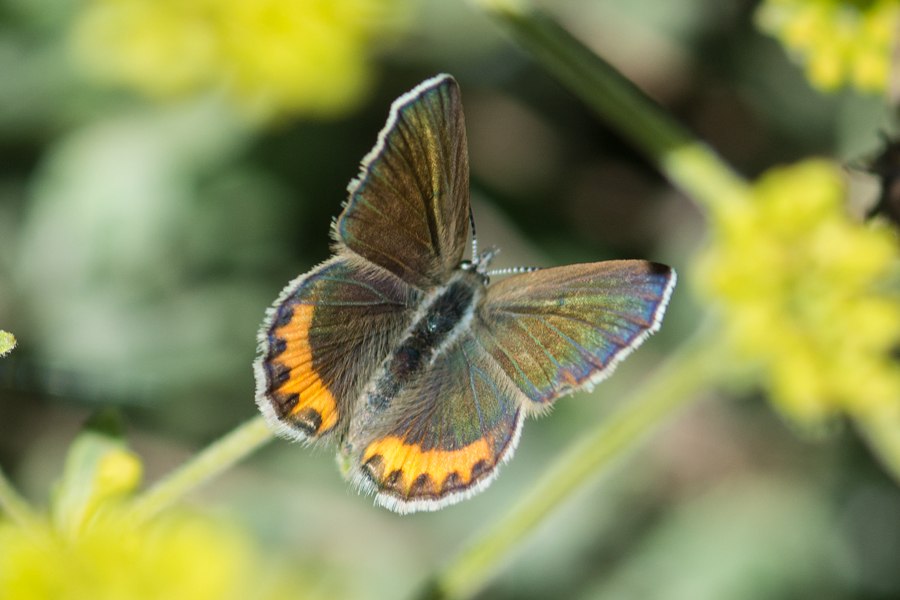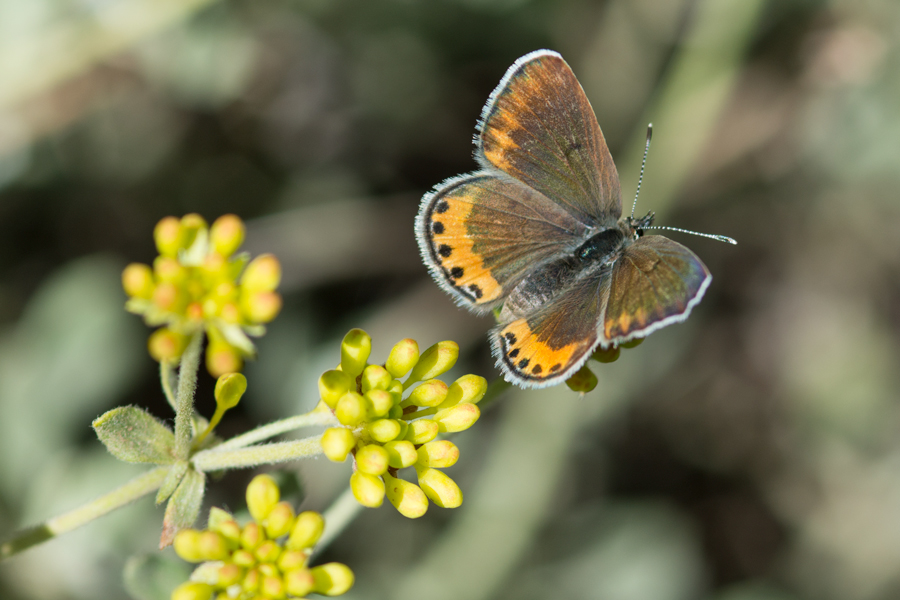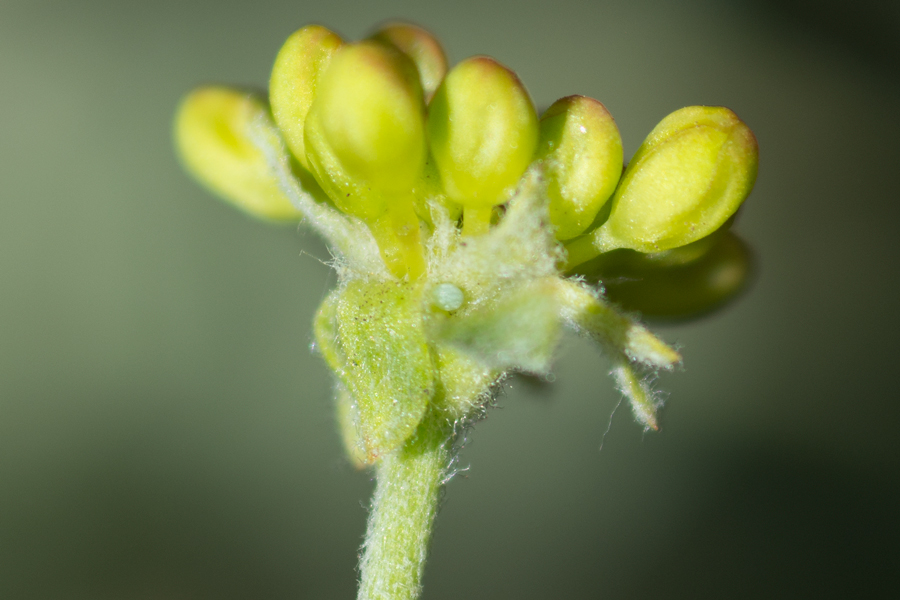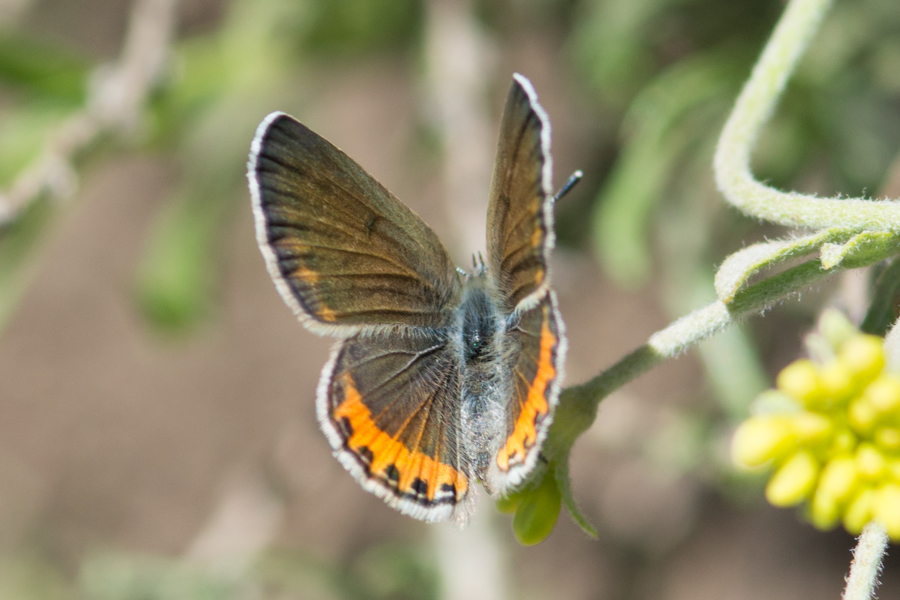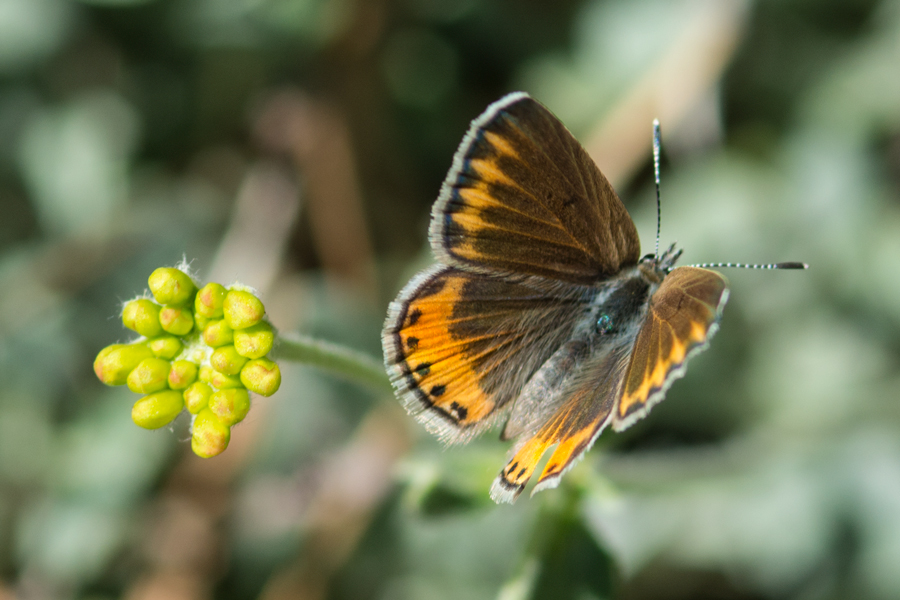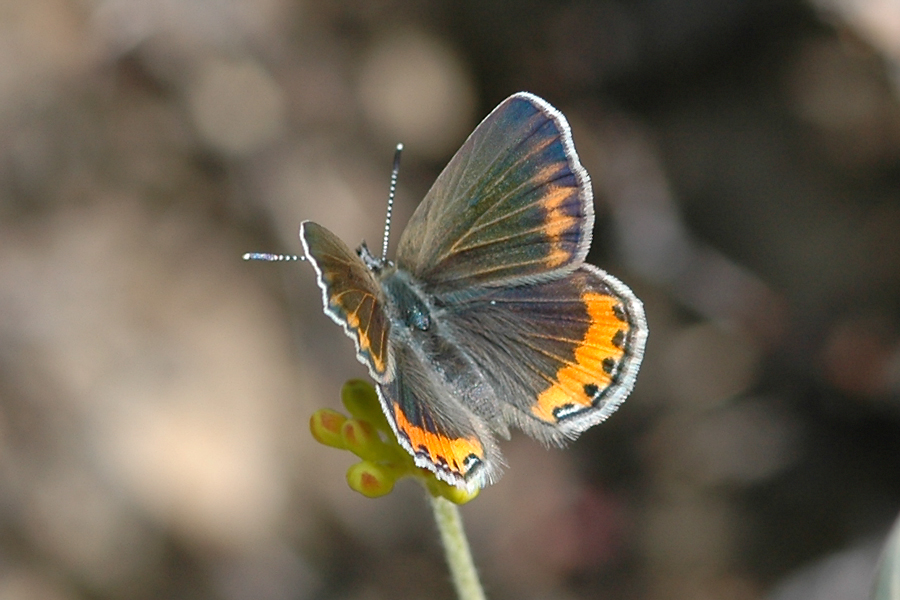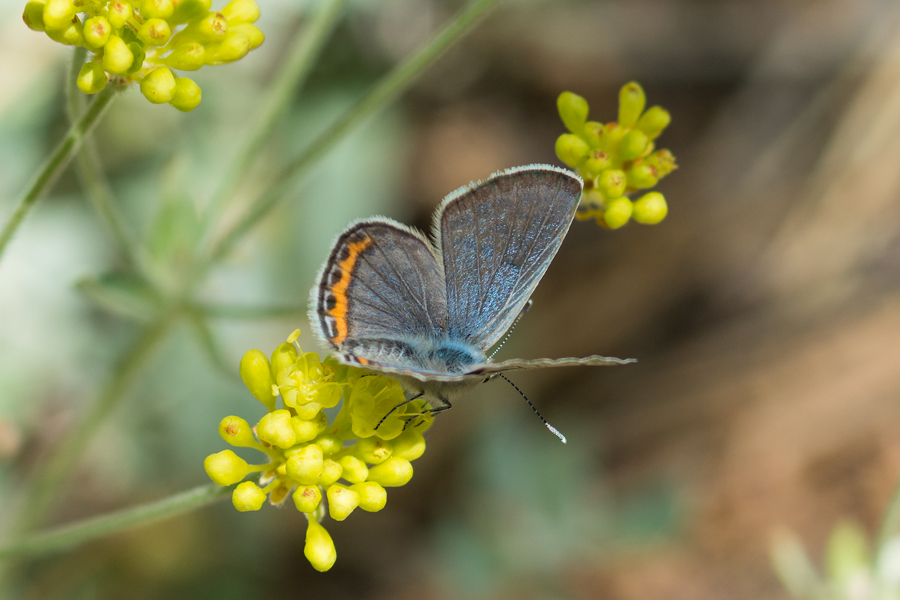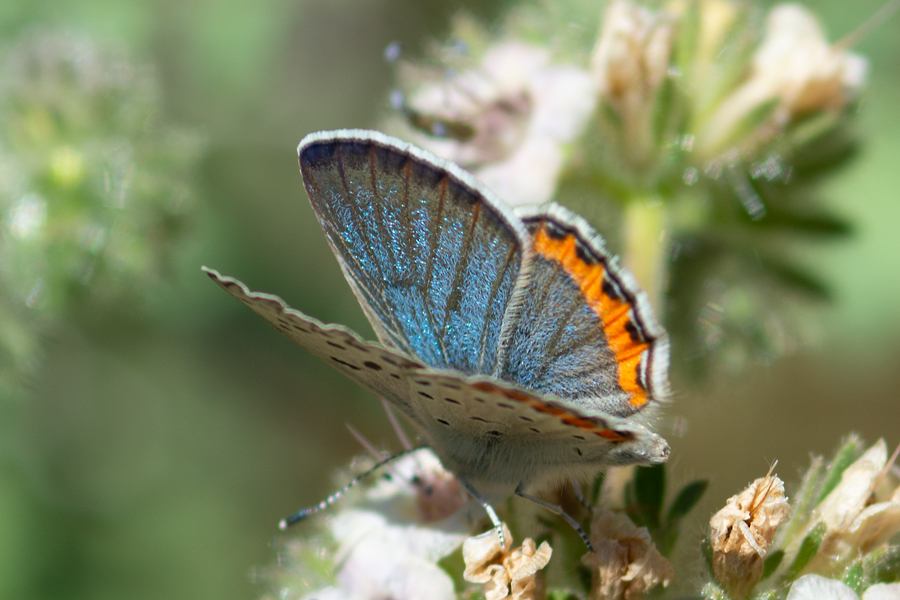Icaricia chlorina chlorina
Green Blue
Once considered merely a greenish form of lupini monticola in the Tehachapis and Tejon Mts. (e.g. Scott 1986, p.412), chlorina is now known to be much more widespread and a different species from monticola altogether (see Ken Davenport's treatment in his Kern/Tulare book, for example). Chlorina is an Eriogonum umbellatum feeder that flies in June and July, whereas monticola uses E. fasciculatum and flies in May.
The Type Locality for chlorina is the Tehachapi Mountains; Skinner collected the male and female types there in July 6, 1895. The TL for monticola is Pasadena, CA. For nominate lupini, the TL was restricted by Emmel et al. to Gold Lake, Sierra County, CA. (Systematics, pp.26-7), "an area that Lorquin likely passed through" ca. 1856. Lorquin collected for Boisduval, who in 1869 named Lycaena lupini.
Along the McGill Trail below Mt. Piños, there is a nice patch of yellow E. umbellatum at around 7100' that supports a colony of chlorina (or a lupini subspecies closely allied with it, per John Emmel, who reared them to be sure they weren't large neurona - pers. comm.). Scott wrote that "some females have the forewing border orange as in P. neurona (...perhaps indicating past hybridization with neurona)." That tendency toward neurona-like orange in the females is definitely present in the McGill Trail population below Mt. Piños, as shown in my photos below. If I can get Tehachapi-area chlorina photos - those are true chlorina - I'll create a separate page for this McGill colony. Per Dr. Emmel, the Tehachapi chlorina flying in June/July is still in the larval stage feeding on umbellatum plants in May while monticola is flying around fasciculatum.
